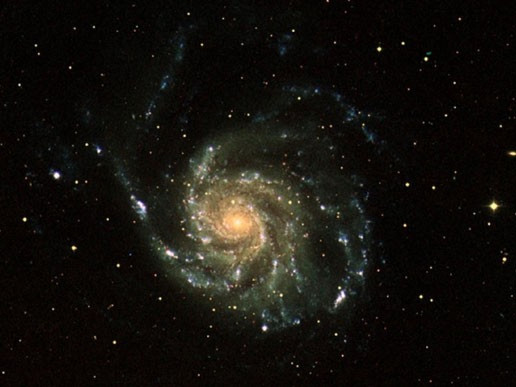Big Bang? More Like Big Freeze, Physicists Claim

Your personal vision of the origin of the universe may go something like this: From nothingness, there comes a sudden explosion, a piercing light of blooming matter -- a Big Bang, if you will. Now a group of Australian physicists are claiming the birth of existence was more like a Big Freeze, though at least one physicist unaffiliated with the paper was immediately skeptical.
James Quach of the University of Melbourne and his colleagues say that their work in quantum graphity, which studies the hypothetical building blocks of space, suggests that the early universe was liquid-like but then "crystallized" into our current universe, with three spatial dimensions and one time dimension.
Quach and his colleagues recently published a paper in the journal Physical Review D, in which they explain that if they're correct, we should be able to see "cracks" in the universe.
If these predictions come true, "that's really good evidence for the condensed matter model of quantum graphity, in which case you can throw out all the other attempts" at modeling the origins of the universe, Quach told the Sydney Morning Herald.
But physicist Matthew Francis, writing at Ars Technica, says Quach is reaching a bit too high in press interviews where he claims that quantum graphity is going to rewrite cosmology, with the Big Chill knocking the Big Bang off of its pedestal.
"The Big Bang model is a general framework for the expansion of the universe, the formation of the first atoms and the evolution of structures that ensued," Francis wrote. "That general framework is not going to be simply overthrown by any new ideas: It's too well-tested for that, and anything new will have to incorporate elements of the Big Bang in order to make sense of those results."
While quantum graphity could describe events happening during the first moments after the Big Bang, Francis says, the paper itself makes no sweeping claims to upset cosmology. If the authors' theory is true, there should be a particular observable bending of light that doesn't quite line up with the bending of light predicted by general relativity.
"I await the follow-up papers with interest. The theory will stand or fall on the evidence, after all," Francis says.
SOURCE: Quach et al. "Domain structures in quantum graphity." Phys Rev D 86, 044001, 2012.
© Copyright IBTimes 2024. All rights reserved.





















